The Beginning
On January 29, 2000, the three foundresses of the Society’s Interprovincial Project in Haiti, Inés Calderón, RSCJ, (Colombian from PTR) Josefa Corrada, RSCJ (PTR) and Judy Vollbrecht, RSCJ (USA), arrived in Port-au-Prince along with Carmen Margarita Fagot, RSCJ, Provincial of Puerto Rico, who stayed for a week. Sisters Calderón, Corrada and Vollbrecht spent their first months in Haiti living with Haitian religious, studying Haitian Creole, and learning the culture of the people.
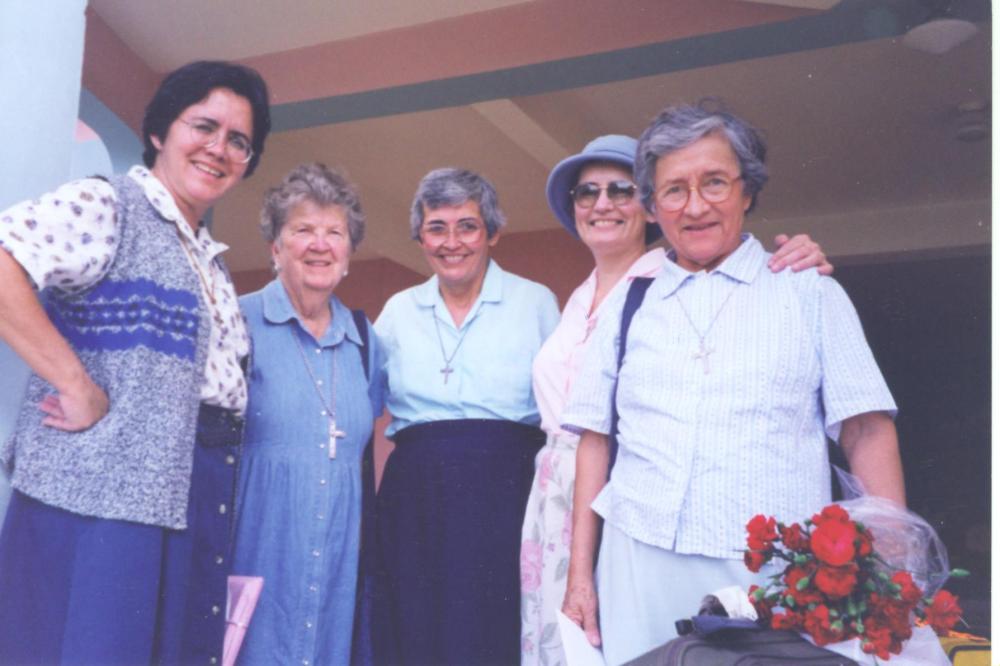
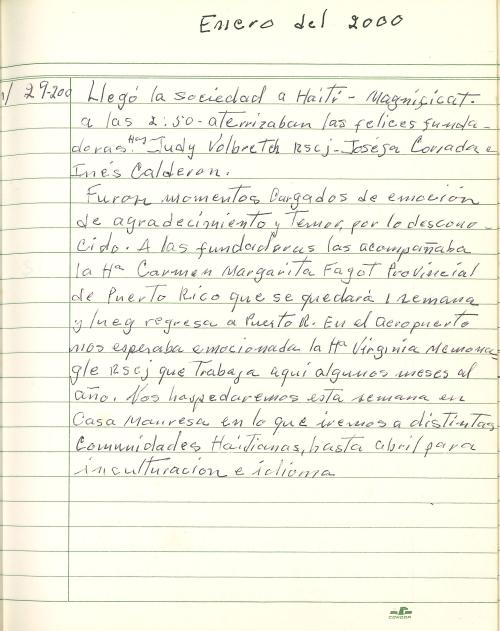
First entry in the journal kept by the foundresses during their initial years in Haiti.[1]
1/29/2000
The Society arrived in Haiti – Magnificat. at 2:50 the happy foundresses landed. Sisters Judy Vollbrecht RSCJ, Joséfa Corrada and Inés Calderon
These were emotionally charged moments of gratitude and fear of the unknown. The foundresses were accompanied by Sr. Carmen Margarita Fagot Provincial of Puerto Rico who will stay for one week and then return to Puerto Rico. Sr. Virginia McMonagle, RSCJ, who works here a few months a year, was excitedly waiting for us at the airport. This week we will stay at Casa Manresa where we will go to different Haitian communities until April for inculturation and language.
Carmen Margarita describes in detail the foundresses’ first days.[2]
Day of arrival
On the 29th of January we departed from San Juan, Puerto Rico and New Orleans, Louisiana to Port-au-Prince, Haiti. We began our trip by praying Our Holy Mother’s favorite prayer; “Sacred Heart of Jesus we trust in you, we throw ourselves on your mercy…Lord Jesus you will not fail us.”
…At the same place where we collected our luggage, we found ourselves in one joyful embrace of welcome: Judith A. Vollbrecht, Inés Calderón and Josefa Corrada our first missionaries in Haiti and Carmen Margarita Fagot. Shortly afterwards, Virginia McMonagle joined us and welcomed us with a bouquet of carnations. We could hardly believe that the Society had finally come to Haiti to stay.
Also there to greet us was Panchi Corrada, the Sister of Josefa....Amidst the luggage and confusion at the airport we took photos of this momentous occasion.
We were then taken to Villa Manresa, a retreat house run by the Brothers of St. Viateur, where many religious and missionaries stay during their time in Port-au-Prince.
In the evening, once dinner was completed, we chatted and shared for a while and then proceeded to the oratory.…
In the chapel, we prayed in thanksgiving because the Society was now in Haiti. We also gave thanks for the many signs of support and solidarity we have received…. Through us and through these poor and excluded people the Jubilee will be announced.…
Later in the week
We were warmly received at the Religious Conference. They already knew both Judy and Inés. They helped us find a place for our sisters to live in Port-au-Prince while studying Creole as well as taking us to the communities where our sisters will live for the next ten weeks. Judith shall be staying with “les Filles de la Sagess” and Josefa and Inés will be with “les Filles de Marie.” The communities are located in the same area: Bel Air. In these ten weeks they shall be learning Creole, arranging their documentation for immigration, getting to know the religious of Port-au-Prince as well as learning the history and customs of Haiti. On Saturdays and Sundays they shall gather together as one community.
On April 14, the sisters left the religious congregations they were staying with in Port-au-Prince and moved to Verrettes in the Diocese of Gonaïves to begin their ministry. They initially stayed at the parish a few days while fixing up their house. This location had been chosen after prior investigations, visits to Haiti and on the advice of friends in Haiti.
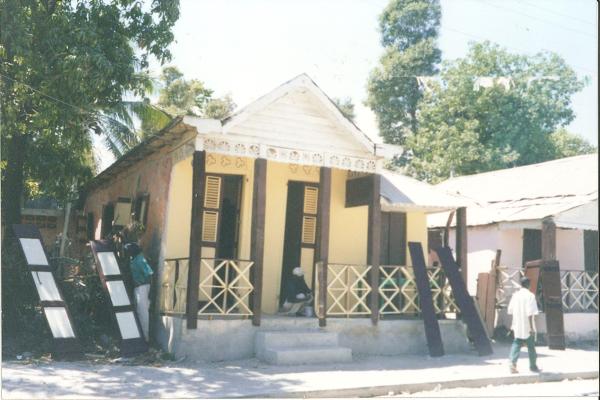
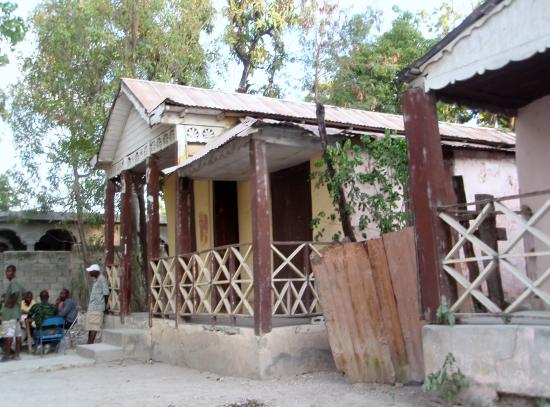
The adaptation was a long and slow process for the three foundresses. They faced the challenges of forming an international community. Communicating with each other was hard work. The sisters had no common language as Judy Vollbrecht did not speak Spanish and Inés Calderón did not speak English though she could understand quite a bit. And they were struggling with understanding Creole. Each of the sisters came from a different culture, had different points of view on money and saw the world differently. While in Port-au-Prince they were able to pray together an entire morning each week. They continued to pray together regularly in Verrettes but were not able to take as much time together in their now busier lives. By December, they still did not have a specific work but they were very busy particularly with the children of “the barrio.” Their goals at this point were to know the people, know the parish, and to learn their language, culture, and history.[3]

Health issues among the foundresses needed to be tended to. Judy returned to the United States at times to take care of her health. At the end of January 2001, Inés returned to Puerto Rico. In February, Gisèle Claeys, RSCJ from the Province of Belgium – Netherlands arrived. The community celebrated Gisèle’s 75th birthday in March.
Projects began to take shape in their second year. From the beginning, children had been coming to the house. Now there was a formal children’s program one afternoon a week with about 40 children. The program expanded to include drama and sewing as well as educational games and activities that helped with math, reading and writing. The children were also given something to eat, e.g., juice and a roll with peanut butter. In May of 2001, the community participated in a solar oven seminar in Verrettes lead by the Free Methodist Church teaching more than 75 people how to make and use the ovens.[4] (Mary Pat Rives, RSCJ (USA) had sent the community two solar ovens via the Free Methodist Church earlier in the year.) In August they ran a two week summer camp, Camp Timoun Tèt Ansanm[5], for about 50 children ages 7- 12. These and other experiences provided some clarity for the next direction. The sisters in Haiti wrote a proposal for the creation of Sant Timoun Tèt Ansanm: A Center for Poor Children (day only) in September. The purpose was “[T]o provide a Center for the development of impoverished Haitian Children which will embody the special love of the Heart of Jesus for children and the poor….”[6]

The proposal was taken up by the provincial teams and treasurers of the provinces who founded the Haitian project - Puerto Rico, United States, Canada, Mexico and Cuba – at their annual meeting, held that year in Haiti, January 26-February 2, 2002. These provinces had made a commitment to sustain the new Haitian community with personnel, either RSCJ or lay, and to provide financial support. The Province of Puerto Rico assumed leadership of the project, supporting its beginnings and taking responsibility for the community. At this meeting, the teams planned together for the future of the Haitian project as they would do for years to come.
The Years of Preparation for the Haiti Foundation
Religious of the Sacred Heart had shown an interest in serving the people of Haiti years before the provinces’ proposal for the interprovincial project in Verrettes. In the 1980s the Province of Puerto Rico had supported people and organizations in Haiti, particularly several parish schools in Verrettes, sometimes through applications to the Society’s Solidarity Fund. Much of this support was in response to communication with Paul Antoine Bien Aimé[7] a good friend of Socorro Juliá, provincial treasurer of Puerto Rico.
Two RSCJ from the United States were moved by the needs of the people in Haiti and made commitments to serve them. In 1987, Virginia McMonagle (USA) left her ministry at the University of San Diego to assist Fr. Rick Frechette, CP in Haiti establishing an orphanage (Ste. Helene) and hospice for sick children (Pere Damien Hospice) as one of Fr. William Wasson’s Foundations.[8] In 1990, Sr. McMonagle visited Venezuela, as the provincial of Venezuela had indicated an interest in a foundation in Haiti. The following summer two sisters from Venezuela, Elena Sampedro, RSCJ and Isabel Mulleras, RSCJ, came to work with Sr. McMonagle during their vacation month. At that time, the three of them wrote a proposal to the General Council for a foundation of the Society of the Sacred Heart in Haiti.[9] The response from Sr. Helen McLaughlin invited Sr. McMonagle to send her reflections to Japan before September so they could be shared with the provincials at the Assembly of Provincials to be held September 15-30, 1991 in Tokyo.[10]
In 1992, soon after the overthrow of Aristide[11], Anita von Wellsheim, RSCJ (USA), Director of Pax Christi Metro DC, was part of a delegation to Haiti with Pax Christi USA. She was drawn “to the brave and suffering people of Haiti.” Not long after this visit, she returned to Haiti to study the language and to volunteer at an orphanage founded by Aristide and with Witness for Peace. In 1996, Sr. von Wellsheim came to know Fonkoze, Haiti’s Alternative Bank for the Organized Poor, founded by Fr. Joseph Philippe, CSSp. She worked briefly with Fonkoze in Port-au-Prince to help with fundraising before returning to Washington, DC to open Fonkoze Metro DC. Two years later she moved to Albany, NY and started Fonkoze Albany which sponsored many events raising funds for Fonkoze, and spreading knowledge about Haiti, its needs, its history, and its people.[12]
Virginia and Anita were passionate about sharing their experiences back in the United States. One example was on Sunday October 15, 1994. Peggy McDonnell, RSCJ (USA) chaired a conference call with about 26 people from different locations to listen to a panel on Haiti. The panelists - Virginia McMonagle, Anita von Wellsheim, Regina Griffin, RSCJ (USA) (who had been the Diocesan Director of the Haitian Apostolate for the Diocese of Trenton, NJ) and Rick Frechette, a Passionist priest – shared their insights on the present situation in Haiti. Participants were encouraged to stay involved with various Haiti advocacy groups.[13]
One such example of supporting a Haitian advocacy group would be the ongoing support the Carrollton School of the Sacred Heart in Miami, FL, has shown to Partners in Health, an organization that provides healthcare to the people of Haiti and other underserved populations around the world.
Back in Puerto Rico, in 1995, Carmen Margarita and her provincial team were beginning their mandate. They visited all of the communities and sisters of the province. It worried them that many the sisters appeared not to have a clear mission focus and they felt the province should begin a process to search for apostolic work alternatives. They wanted to look for options to incarnate the Society’s charism, possibly in the opening a community among the poorest, perhaps in Haiti. The province planned a series of visits to Haiti to learn more about the reality of the country. They sought the advice of a Haitian Jesuit friend, Godefroy Midy, SJ[14] who in turn contacted another priest who knew a lot about religious life and the Haitian reality, William Smarth, CSSp[15]. The priests worked together in discernment processes with religious communities.
In December 1995, Carmen Margarita and Natividad (Naty) Hernandez, RSCJ (PTR) went to Haiti, meeting with a wide variety of people and visiting several locations, including parts of Port-au-Prince. They met with Anita von Wellsheim and visited the hospital where Virginia McMonagle worked. Paul Antoine Bien Aimé provided the visitors with a description of the educational situation in the Haiti and the current needs. The sisters were able to visit Verrettes and La Chapelle. There they learned about different schools and spoke with Bishops, the Secretary of the Conference of Haitian Religious and many others. At the end of their visit Carmen Margarita, Naty and Anita met with Fathers Midy and Smarth for reflection on their lived experience and discernment. They began by looking at the Society’s charism and the process lived by the Society the previous 25 years. What were the aspects of the Society’s charism that were in consonance with the reality of the Haitian people? The details of their visit and their final reflections were shared in a 14-page report.[16]

A few months later, April 23-May 3, 1996, Josefa Corrada attended a workshop on Justice, Peace and Ecology in the Caribbean organized by the Confederation of Latin America Religious (CLAR)[17] in Port-au-Prince. Among the speakers was Rony Smarth, Prime Minister of Haiti, who presented a vision of Haiti’s socio-political situation.
Another group of three RSCJ went to Haiti December 2-11, 1996 - Carmen Margarita; Marina Hernandez, RSCJ (USA), Provincial team member in the United States; and Sandra Acevedo RSCJ (PTR) - for the purpose of discovering relevant information that would help in the discernment of establishing an international community in Haiti.[18] Their goals included knowing the work being done for women in the country, speaking with priests in Verrettes about the planned teachers’ workshop, exploring possibilities of work for justice, looking for information on Ecclesial Base Communities, and investigating the needs perceived by women religious already inserted in Haiti. The group began their visit with conversations with Fathers Midy and Smarth before visiting Verrettes and Gonaïves and met again with the priests at the end of their visit for a day of reflection.
Marina Hernandez shared her experience of the week in Haiti in a report to the U.S. Province.[19] She describes the poverty and misery of the people they met and reflects on the challenging social and political conditions. Marina had gone to Haiti in response to Carmen Margarita’s request that someone from the U.S. province join her on this trip. In her report, Marina explains that the Province of Puerto Rico was in the process of investigating a mission of the Society to Haiti and if they decide to go, they were inviting the U.S. to send a person with them. She notes that another step in the discernment would be a two-week experience in Haiti in July. Arrangements were being made with Fr. Jean Francique, the pastor in Verrettes, his staff and the people of the parishes to do a teacher training workshop with elementary teachers from Verrettes and La Chapelle. Carmen Margarita hoped to have five people go – three from Puerto Rico and two from the United States.
Correspondence between Fr. Jean Francique and the Province of Puerto Rico about the desired teachers’ workshop began in the fall of 1996 before the RSCJ visit to Haiti in December of that year.[20] Fr Francique explains that the schools are located in rural areas mostly in mountains and it is difficult to get qualified teachers. Some cannot even write their name. He sees the possibility of the sisters retraining or qualifying 100 teachers in two three-day sessions of 50 teachers each sometime in early July 1997. Themes would include basic pedagogy, oral and written communication, classroom management and group dynamics. Language was thought not to be a problem as the teachers spoke French. The amount of money he requested for these workshops was U.S. $3998. The Province of Puerto Rico thought that the Society’s Solidarity Fund would cover the expenses.[21]
The teachers’ workshop, known as the Mission in Haiti or the Summer Mission, took place June 30-July 16, 1997.[22] The missionary group included Sisters Fagot, Corrada, Maria Milagros Carbonell and Sandra Acevedo from Puerto Rico; Sisters Kitty Costello and Margaret (Marg) Miller from the United States; and Sisters Margarita (Mague) González and Teresa (Tere) de la Peza from Mexico. The missionaries began with an orientation and ended with a discernment session at Villa Manresa in Port-au-Prince. The first teachers’ workshop, July 3-6, was composed of teachers from the Verrettes schools and the second one, July 11-13, had teachers from La Chapelle. Marg Miller and Mague offered a supervisors’ workshop July 8-9.
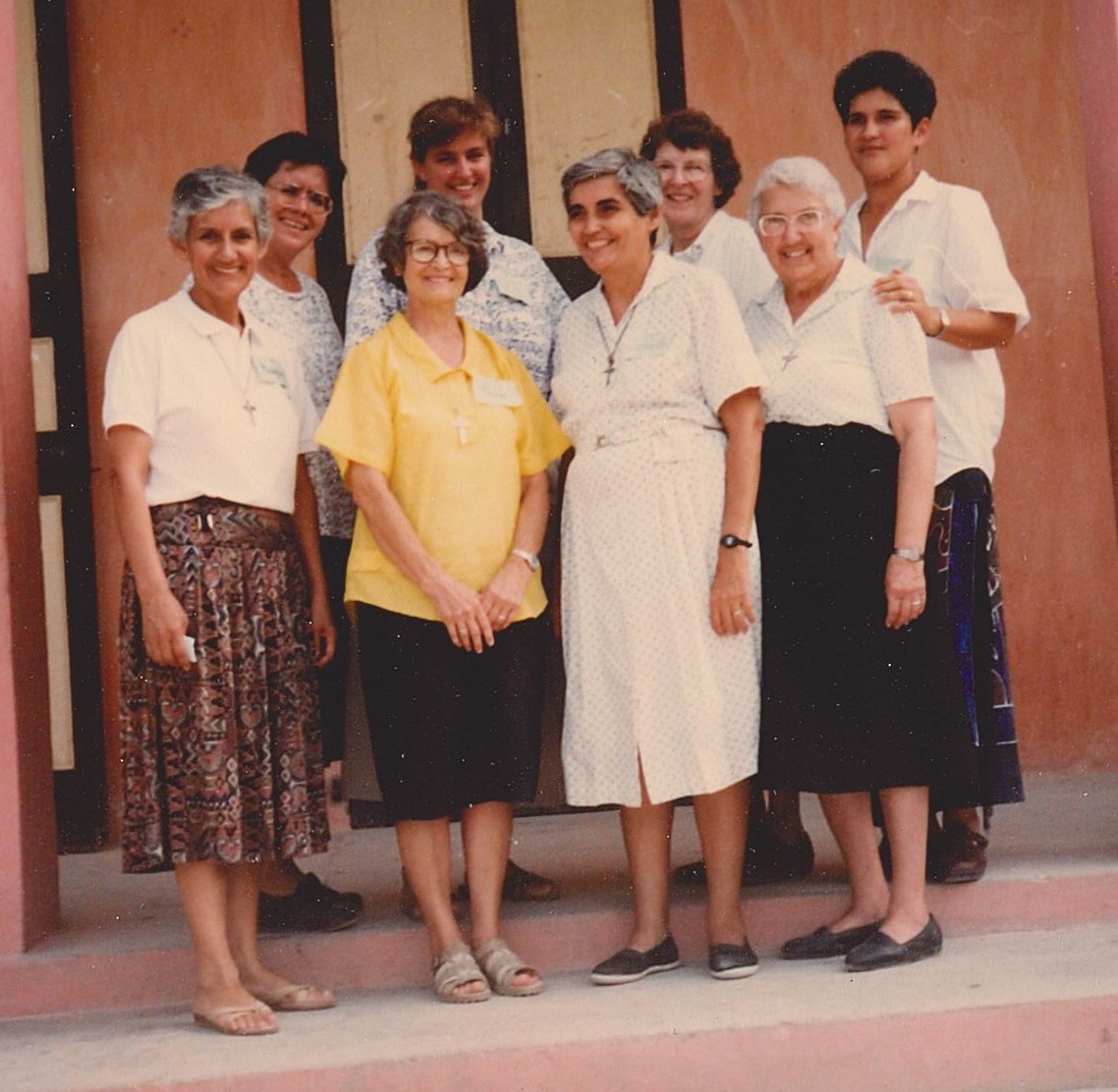
In October 1997, at the Assembly of Provincials held in Chile, Carmen Margarita Fagot, provincial of Puerto Rico shared her province’s process of discernment 1995-1997 to begin an apostolic work in Haiti. She noted it was time for the province to make its decision and asked for prayers. “That there is a call from the Haitian reality that cries out is obvious. But we have to ask ourselves if we really feel that call as a province….”[23]
The conversation about a Haiti foundation continued at the annual reunion of the provincial teams and staffs of Puerto Rico, Canada and the United States, held in Puerto Rico the week of January 18, 1998.
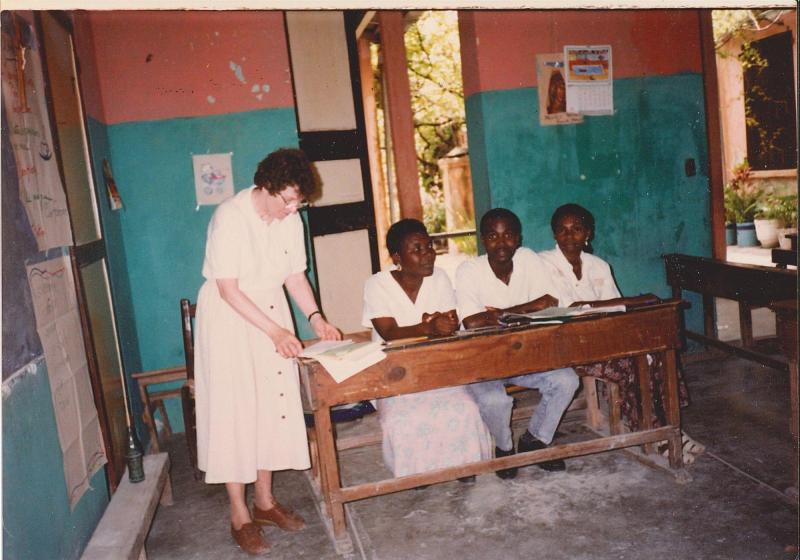
On October 18, 1998, The United States province hosted an informational teleconference on the proposed foundation in Haiti, to which the communities in Canada and Puerto Rico were also invited. This was the first teleconference of its kind including members of the three provinces.[24] On this call, Barbara Dawson, Provincial of the United States, gave a general overview of project. Virginia McMonagle, who, at that point, had been working in Haiti for 12 years, gave an account of the current condition of the people in Haiti. She noted that the nation and the people are very complex and that education was a paramount need, particularly the training of teachers to teach their own people. Carmen Margarita presented what the Puerto Rico province had been doing regarding a foundation in Haiti and why. She gave a brief description of the discernment since 1995, which included 4 visits to Haiti. She shared that the Society had received 3 formal invitations, 1 in Verrettes and 2 in the city of Gonaïves. At the end of her presentation, Carmen Margarita highlighted that the vision for Haiti was that it be an international community, that there were not sufficient personnel available in Puerto Rico alone. Following the presentations each city/community connected to the teleconference had an opportunity to ask questions of Virginia or Carmen Margarita.
In January 1999, the provincial teams and treasurers from Canada, Mexico, Puerto Rico and the USA met at the Spiritual Ministry Center in San Diego for their annual reunion.[25] They discussed for the third year the possibility of starting a new educational project for the Society in Haiti. Carmen Margarita Fagot had prepared a written proposal, which outlined various aspects of the project. Virginia McMonagle was invited to be part of their reflection time. All four teams agreed that this was the right moment to begin the project. Haiti was the most desperate country in the western hemisphere and the Society had been asked several times to begin some type of educational project there. They believed a collaborative project of four provinces was a sign of how internationality could be Good News for the poor rather than oppression of the powerful over the weak They also felt this was a concrete way for the Society of the Sacred Heart to mark the beginning of a new millennium and their bicentennial. This group sent a letter and their proposal to begin an educational project in Haiti to the General Council from this meeting.[26]
At the Reunion of Latin America Provincials in Mexico, in March 1999, the General Council asked the provincials for further clarification on the possible education project in Haiti. Accordingly, on the week of April 25-May 2, Anne-Marie Conn, RSCJ (CAN), Janis Dahl, Elena Sampedro, RSCJ (VEN), Inés Calderón, RSCJ and Carmen Margarita Fagot, RSCJ visited Haiti for this purpose. Anne-Marie, provincial of Canada, wanted to have experiential knowledge of Haiti. She invited Janis, a Canadian lay woman, who had been a volunteer in Ghana. Elena had worked with Virginia McMonagle in Haiti about 8 years earlier. Inés had asked to go to Haiti. Carmen Margarita, provincial of Puerto Rico, organized the trip.
The group began and finished the week with a day of reflection with Fathers Smarth and Midy, who had accompanied the sisters in this discernment from its beginnings. During the week the group dialogued with significant people including:
Archbishop Miott, Archbishop of Port-au-Prince
Fr. Firto Regis, President of the Conference of Haitian Religious
Sr. Maria Nilse who had lived in Verrettes
The priests of Verrettes
M. Paul Antoine Bien Aimé, the Minister of Education
Marcel Silvester, of the Christian Schools, Vice Rector of the University of Notre Dame
Fr. Jan Hanssens, president of the Archdiocesan Commission on Justice and Peace
Professors Hanci Pierre and Roosevelt Millard of the Faculty of Human Sciences at the University
of Haiti.
Other priests and religious inserted in Haiti.
At the end of the week, they had reached some clarity. “After the series of interviews we had, we considered that the place that offers the Society of the Sacred Heart…a space to announce the love of the Heart of Jesus and a path to discover in the process of alternative education is Verrettes.”[27] There were possibilities for working with the parish clergy and concrete educational needs: religious formation, training of catechists and leaders of small communities, and justice and peace regarding the promotion of women.
A positive response for the educational project came from the General Council on June 11, 1999. “Throughout this time of discernment with you we have reflected on this possibility and now we see that the moment has come....” “In coming to this decision we have been helped by the regional nature of this project and by the process you have gone through to clarify the meaning of our presence in this country which is the poorest of Latin America.” “It is a joy to arrive at this decision and to begin the community in the year 2000.” The letter noted that the provincial of Puerto Rico would have final responsibility and she would be the one accountable to and in communication with the other provincials and the General Council.[28]
The “Status” report on Haiti from the provincials to the General Council dated July 18, 1999, notes that Cuba had asked to join the regional meetings provincial teams to be part of this project. The provincials wrote that the community would begin in Haiti in January 2000 with an inculturation period of at least 4 months and that the community would be a part of the Province of Puerto Rico for three years. The letter in response to the “Status” report from the Superior General clarifies that “this community is part of the Province of Puerto Rico and supported by the other provinces.[29]
On August 26, 1999, Patricia Garcia de Quevedo, RSCJ, Superior General, sent a letter to all of the Society provincial, district, and area superiors announcing the decision to begin the Haiti foundation. In that letter she shared that three people would be going to Haiti the coming January, two from Puerto Rico and one from the United States. She added “…we invite anyone who feels this call to begin to discern it: the harvest is great and laborers few.”[30]
After years of discernment, it was now time to establish the new foundation. Arrangements needed to be made for the foundresses’ housing, language study and inculturation process. Finances for the future community and their ministries needed to be secured. Etc. On January 29, 2000, with all the details in place, the three foundresses set out for Haiti.
Abbreviations
ANAM: Gathering of provincial leadership from Antilles, North America and Mexico
ArchivesPR: Archives of Puerto Rico
ArchivesUSC: Archives of the United States-Canada Province
BNL: Province of Belgium-Netherlands
CAN: Province of Canada
CUB: Area of Cuba
MXN: Province of Mexico-Nicaragua
PTR: Province of Puerto Rico
USA: Province of the United States
USC: Province of United States-Canada
VEN: Province of Venezuela
[1] Diario Comunidad Haití enero 2000. ArchivesPR IV. J. Box 2
[2] “And this is how our small SOCIETY OF THE SACRED HEART arrived to Haiti in the JUBILEE YEAR 2000…” ArchivesUSC II.B.1.Correspondence.
[3] Community of Verrettes, Haiti EVALUATION Dec. 31, 200. ArchivesPR IV.J. Box 1.
[4] A complete account of “our latest adventure in Haitian living: a seminar on solar ovens” was written by Josefa Corrada, Judy Vollbrecht and Gisèle Claeys, March 2001. ArchivesUSC II B.1.Haiti.
[5] English Translation: Children Together
[6] “RSCJ in Verrettes, Haiti Proposal September 2001” ArchivesPR IV.J. Box 1
[7] In a letter to Sister Shelagh Deegan, provincial treasure of Canada, dated Sept. 15, 1990, Socorro Juliá, provincial treasurer of Puerto Rico recommends her good friend Paul Antoine Bien Aimé whom she has known for more than ten years. Socorro notes that she used to visit Haiti every year “before the last sad events” and had stayed under his care in the village of La Chapelle where he lived. She continues, “I am grateful for whatever help you or any of your fellow citizens will do to assist Paul Antoine in his plans to study and prepare himself for a service to his brothers in Haiti.” ArchivesPR IV.J Box1 At one point he was the Minister of Education. Then he was the Minister of the Interior and Territorial Collectives of Haiti 2006-2011.
[8] Fr. Wasson, born in Arizona in 1923, was ordained a priest by the Bishop of Cuernavaca in 1953. His ministry was focused on the care of orphaned, abandoned and poor children. He initiated institutions in several countries including Mexico and Haiti.
[9] ArchivesPR IV.J Box1
[10] It is not clear how much Haiti was discussed at this Assembly of Provincials. One document from the Assembly dated September 29, 1991 notes, “We have been touched by calls [from various countries]” and lists four categories of countries. The third category reads: “[O]f countries where some sisters are working already in response to actual needs and where we are gaining experience of the situation by committing ourselves for a limited period: Indonesia, Haiti, Russia and Paraguay.” ArchivesUSC I.E.2 Box 2.
[11] Jean-Bertrand Aristide, former Catholic priest and first democratically elected president of Haiti, deposed in a military coup in September 1991. Aristide would serve again as president from 1994-1996 and 2001-2004
[12] From Sr. von Wellsheim’s own description of her ministries as an RSCJ. ArchivesUSC XII.
[13] Update October 1994 # 140, p 9.
[14] Fr. Godefroy Midy, born in Haiti in 1932, was ordained a priest in 1959 for the Archdiocese of Port-au-Prince. After studying philosophy and counseling at Fordham and theology at the University of Montreal, he entered the Jesuits (French Canadian province) in 1973. He returned to Haiti in 1976. He served as a professor of theology at the Major Seminary of Notre Dame in Port-au-Prince. He was the main architect for establishing the Society of Jesus in Haiti after the departure of Duvalier.
[15] Fr. William Smarth, a Spiritan, was born in Haiti in 1931. A theologian, formator and advocate for the struggles of the Haitian people. He helped found the Spiritan Ministry, Centre Inter-Instituts de Formation Religieuse (CIFOR). Author of the book, Histoire de l’Eglise catholique d’Haiti 1492-2003 published by CIFOR 2015.
[16] «Narracion de la visita de Carmen Margarita Fagot y Natividad Hernandez a Haití, diciembre 1995.» ArchivesPR IV.J.Box 1
[17] CLAR, Confederación Latinoamericana de Religiosas y Religiosos, is the conference of women and men religious from Latin America and the Caribbean.
[18] “A Visit to Haiti December 2-11,1996” Eleven page report. ArchivesSPR IV.J.box 1
[19] Update no. 166 January 1997, p 9.
[20] ArchivesPR IV.J. Box 1
[21] Solidarity Fund Report 1996. Puerto Rico was awarded $30,000 for Haiti. “Nine rural schools north of Port-au-Prince: salaries and creation of a fund for these nine schools; teacher training.” ArchivesUSC I.G. Box 8.
[22] See ArchivesPR IV.J Box 1 for the full itinerary, proposals for each session and participants’ evaluations.
[23] “Haiti, Proceso de búsqueda 1995-1997.” Written report which Carmen Margarita Fagot, RSCJ shared orally at the Assembly of Provincials. ArchivesPR IV.J.Box 1.
[24] Audio recording ArchivesUSC Inventory II IX.B.3.Barbara Dawson.teleconferences. Spanish transcription ArchivesPR IV. J. Box 1.
[25] The U.S. provincial team and staff began annual reflection meetings, “retreats,” together in February 1983. The Canadian team and staff joined them in 1986. The two teams and staff continued to meet together annually. In January 1992, the provincial of Puerto Rico, Maria Clemencia Benitez, RSCJ, and one of her team members, Maria Milagros Carbonell, RSCJ joined the gathering. The annual meeting henceforth consisted of the three provincial teams and some of their staff, often the treasurers. In 1999, the teams and staff reflection days included for the first time Isabel Aranguren, RSCJ and Socorro Martinez, RSCJ from the Mexico-Nicaragua province. Then in 2001, Cristina Colás, RSCJ, superior of the Area of Cuba, joined the other 4 provinces at their annual meeting. In 2002, this leadership group representing Canada, Cuba, Mexico, Puerto Rico and the United States adopted the name ANAM – Antilles, North America and Mexico. ArchivesUSC II.C.ANAM
[26] The letter was signed by Carmen Margarita Fagot, Diane Roche, Shelagh Deeghan, Anne-Marie Conn, Isabel Aranguren, Socorro Martinez, Marina Hernandez, Barbara Dawson, Josefina Ramos, Donna Dolan, Judy Cagney, Josefa Corrada and Georgie Blaeser. ArchivesPR IV. J. Box 1, ArchivesUSC II.B.1. Box 3.
[27] “Visita Haiti 1999” p.2 ArchivesPR IX.J box 1
[28] Letter from General Council. Ref 99/125. To the provincials of Puerto Rico, Canada, Mexico-Nicaragua, the United States and to the superior of the Cuba Area. “Queridas Carmen Margarita, Anne-Marie, Socorro, Barbara y Carmen.” ArchivesPR IV.J. Box 1.
[29] Individual identical letters were sent to Sisters Anne-Marie Conn, Carmen Margarita Fagot, Kathleen Hughes and Soco Martinez dated December 23, 1999. ArchivesPR IV.J. Box 1, ArchivesUSC II.B.1 Haiti.
[30] ArchivesPR IV.J. Box 1. ArchivesUSC II.B.1.Haiti.
